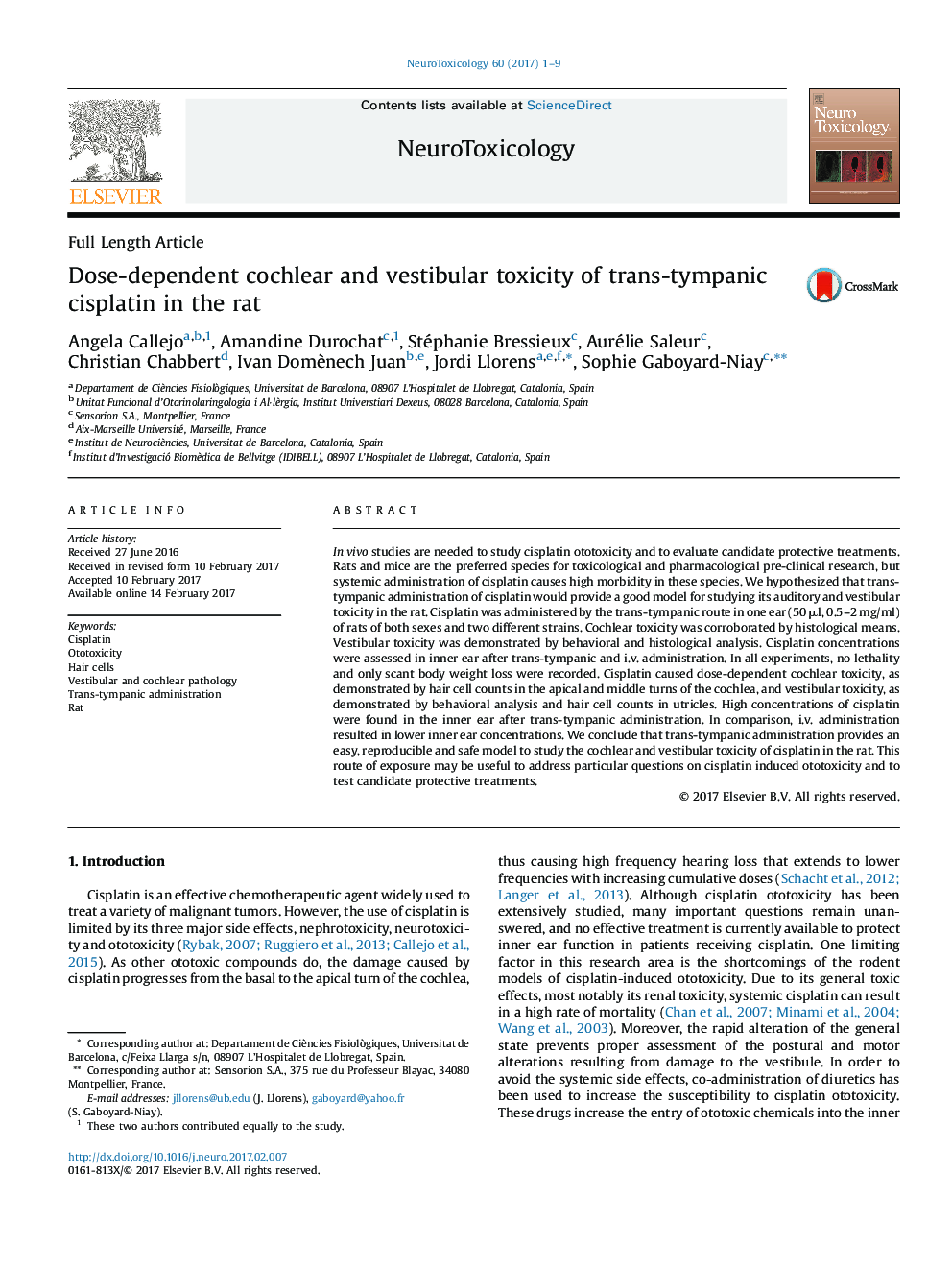| Article ID | Journal | Published Year | Pages | File Type |
|---|---|---|---|---|
| 5560817 | NeuroToxicology | 2017 | 9 Pages |
â¢Trans-tympanic cisplatin causes scant systemic toxicity in rats.â¢Trans-tympanic cisplatin causes dose-dependent cochlear toxicity in rats.â¢Trans-tympanic cisplatin causes dose-dependent vestibular toxicity in rats.
In vivo studies are needed to study cisplatin ototoxicity and to evaluate candidate protective treatments. Rats and mice are the preferred species for toxicological and pharmacological pre-clinical research, but systemic administration of cisplatin causes high morbidity in these species. We hypothesized that trans-tympanic administration of cisplatin would provide a good model for studying its auditory and vestibular toxicity in the rat. Cisplatin was administered by the trans-tympanic route in one ear (50 μl, 0.5-2 mg/ml) of rats of both sexes and two different strains. Cochlear toxicity was corroborated by histological means. Vestibular toxicity was demonstrated by behavioral and histological analysis. Cisplatin concentrations were assessed in inner ear after trans-tympanic and i.v. administration. In all experiments, no lethality and only scant body weight loss were recorded. Cisplatin caused dose-dependent cochlear toxicity, as demonstrated by hair cell counts in the apical and middle turns of the cochlea, and vestibular toxicity, as demonstrated by behavioral analysis and hair cell counts in utricles. High concentrations of cisplatin were found in the inner ear after trans-tympanic administration. In comparison, i.v. administration resulted in lower inner ear concentrations. We conclude that trans-tympanic administration provides an easy, reproducible and safe model to study the cochlear and vestibular toxicity of cisplatin in the rat. This route of exposure may be useful to address particular questions on cisplatin induced ototoxicity and to test candidate protective treatments.
